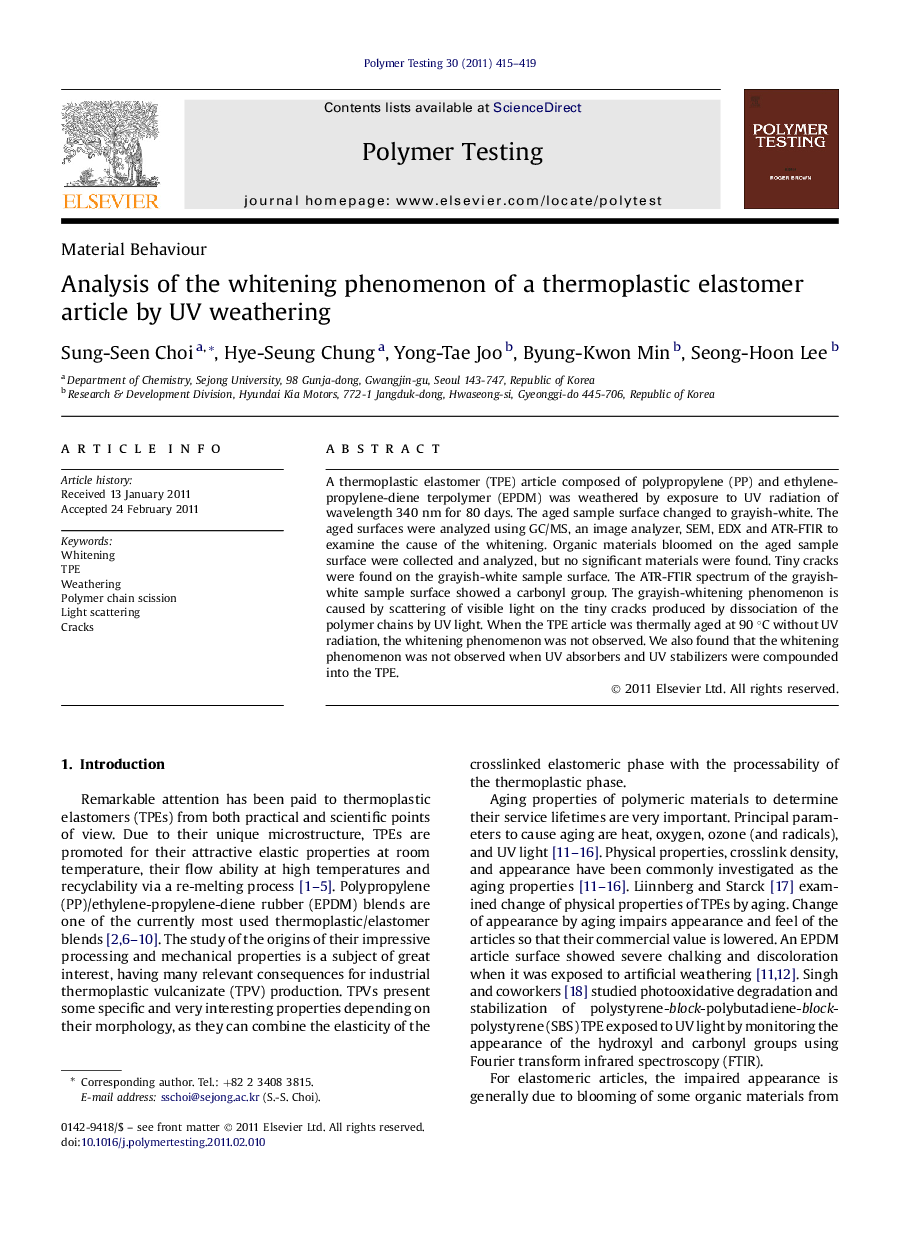| Article ID | Journal | Published Year | Pages | File Type |
|---|---|---|---|---|
| 5206859 | Polymer Testing | 2011 | 5 Pages |
Abstract
A thermoplastic elastomer (TPE) article composed of polypropylene (PP) and ethylene-propylene-diene terpolymer (EPDM) was weathered by exposure to UV radiation of wavelength 340 nm for 80 days. The aged sample surface changed to grayish-white. The aged surfaces were analyzed using GC/MS, an image analyzer, SEM, EDX and ATR-FTIR to examine the cause of the whitening. Organic materials bloomed on the aged sample surface were collected and analyzed, but no significant materials were found. Tiny cracks were found on the grayish-white sample surface. The ATR-FTIR spectrum of the grayish-white sample surface showed a carbonyl group. The grayish-whitening phenomenon is caused by scattering of visible light on the tiny cracks produced by dissociation of the polymer chains by UV light. When the TPE article was thermally aged at 90 °C without UV radiation, the whitening phenomenon was not observed. We also found that the whitening phenomenon was not observed when UV absorbers and UV stabilizers were compounded into the TPE.
Related Topics
Physical Sciences and Engineering
Chemistry
Organic Chemistry
Authors
Sung-Seen Choi, Hye-Seung Chung, Yong-Tae Joo, Byung-Kwon Min, Seong-Hoon Lee,
